Table of contents
The common ground elder ( Aegopodium podagraria), also called goat's foot, is a wild-growing food plant. In Europe, ground elder is the only Aegopodium species, but it has several poisonous counterparts. It can be used raw as a wild vegetable. Wild collection is usually in organic quality.
Use in the kitchen
Ground elder is a tasty wild vegetable. Raw ground elder smells and tastes like parsley and carrots, cooked it tastes like spinach. The plant, often called goat's foot, was an important crop in medieval farm gardens. It is one of the oldest wild vegetables in Central Europe and is a component of a holiday soup called Maundy Thursday soup. During the world wars it was an important source of vitamins and minerals, including vitamin C, carotene, potassium and iron. 4
The leaf shoots, leaves, flowers, seeds and shoots of ground elder are used, and less often the leaf stalks. The seeds taste spicy and the flowers pleasantly sweet. After flowering, the leaves usually taste stronger to bitter and are better suited for tea infusions or cooking than for eating raw. The leaf stalks, which also taste bitter, are rich in fiber. It is best to use young, juicy and thick leaf stalks from plants that grow in shady forests. The stalks are cut lengthways and the fibers are removed.
In spring, the young leaf shoots are particularly tasty as a salad base and raw food. HERE you can find a vegan recipe for carpaccio with wild plant salad.
Raw leaves can be used as a substitute for parsley, in bulgur and chickpea salad, smoothies, pestos or spreads. Cooked or steamed, ground elder tastes great in (cream) soups, in stews, in strudel, as a spinach substitute, as a vegetable filling, on pizza, in bread dumplings or in herbal soups.
Vegan recipe for ground elder soup
Ingredients (4 people): 500 g potatoes, 200 g carrots, 1 onion, 3 handfuls of fresh ground elder leaves, 1 l water, some salt andpepper, 400 gsmoked tofu, 4 tbsp soy sauce, 2 tbsp rapeseed oil (frying oil), vegan sour cream to garnish, 1 tbsp lemon juice
Preparation : Dice the potatoes, onion and carrots and cook in a large pot covered with water for approx. 15 minutes until soft. Meanwhile, cut the tofu into small cubes. Put oil in a pan and fry the tofu until golden brown. Remove from the heat and deglaze with the soy sauce. Wash the ground elder leaves well and chop finely. As soon as the potatoes are soft, fold in the ground elder and lemon juice and puree the soup finely. Divide the ground elder soup into four bowls, add a spoonful of sour cream to each and sprinkle the fried tofu over it.
Recipe for fresh ground elder tea
Preparation : For one cup (250 ml), pour boiling water over 2 tablespoons of fresh, finely plucked ground elder leaves. After letting it steep for 5 to 10 minutes, strain the herb.
Vegan recipes with ground elder can be found under the note: " Recipes that have the most of this ingredient ".
| Not only vegans or vegetarians should read this: Vegans often eat unhealthily. Avoidable nutritional errors. |
Purchasing - Storage
It is practically impossible to buy fresh ground elder in shops. We did not find ground elder in supermarkets such as Rewe, Edeka, Spar, Coop, Migros, Aldi, Lidl, Denner, Volg, Billa or Hofer, nor in organic supermarket chains such as Alnatura and Denn's Biomarkt. Dried ground elder is available online - mainly packaged as tea (Herba Aegopodii), also in organic quality.
Seeds or seedlings for the garden can occasionally be found online. Unfortunately, the range of weed killers available to combat ground elder is much larger.
Ground elder is fresh and seasonal, available regionally (DA-CH). It is in season in DA-CH countries from March to September; in mild winters the season can be extended. Outside of the local season, ground elder is available in stores all year round as a stored product (dried herb), also thanks to local imports (eg Poland, Germany).
The availability of ground elder varies depending on the size of the store, catchment area, etc. Our recorded food prices for the DA-CH countries can be found above under the ingredient image - and by clicking on them you can see their development at various suppliers.
Found in the wild
Where can I find ground elder? It is often found in gardens, shady, damp bushes, light deciduous forests, on hedges and roadsides or in parks. This widespread and readily available wild plant prefers nitrogen-rich, loose and nutrient-rich clay and loam soils. 1
Ground elder leaves (leaf blades) are doubly pinnate or doubly pinnate and arranged alternately on the stem. The leaf stalks, which are up to 20 cm long, are angular and hollow. Flower stalks can reach a height of up to 90 cm. The inflorescence is an umbel, ie the 12-18 flower-bearing axes are attached together to the stem axis. The fruits, which are around 4 mm long, are brownish with lighter ribs, they resemble caraway seeds and the whole plant gives off the typical, parsley-like smell of ground elder. 1,4
Ground elder is in season almost all year round: from March to April you can harvest the leaf shoots, in May the budding inflorescences, from June to August the fully blossomed flower plates and from July to September the ripe seeds. The main flowering period for ground elder is in June, July and August. Tender leaves of the semi-evergreen ground elder can be harvested almost all year round, as the leaves close to the ground can survive mild winters. 1,2
Note: There are plants that look very similar but are poisonous (more on this in the section 'Risk of confusion')!
Tips for storage
Ground elder should be used fresh, frozen or gently dried. If stored in the refrigerator, it quickly loses its antioxidant effect. 12 To do this, you can spread it out on a kitchen towel and leave it to dry in the fresh air. The plant parts should not be exposed to direct sunlight. If the plant parts rustle when you touch them, they are dry and you can chop them up with scissors. Paper bags, metal cans or brown jars are suitable for storage. 3
Ingredients - Nutritional values - Calories
Ground elder nutritional tables are rare. We have compiled data from various sources.
The macronutrients consist of approximately 0.4 g fat, 5.9 g carbohydrates and 2.7 g protein per 100 g. 100 g ground elder provides 39 kcal of energy. 16
Ground elder contains minerals, resin, essential oil, flavonoids and phenolic acids and contains several times more vitamin A, vitamin C and protein thanlettuce. 2,17 The high levels of vitamin C and copper are particularly noteworthy. 100 g of freshly harvested ground elder provides 2 mg of copper (200% of the daily requirement) and 140 mg of vitamin C (175% of the daily requirement). 15,16 However, on average we consume more than enough copper and too much of this metal is unhealthy. 18
Higher copper values can be found in port wine (10 mg/100g), sesame (4.08 mg/100g) or cocoa beans or cocoa powder (3.79 mg/100g). More vitamin C is found in acerola (1,677.6 mg/100g), sea buckthorn berries (450 mg/100g), garlic mustard (261 mg/100g) or guava (228.3 mg/100). 14
Ground elder also contains a lot of manganese, 1.4 mg per 100 g, which covers 70% of the daily requirement. 16 Manganese is mainly found in plants, as plants need this element for photosynthesis, among other things, but also for the production of secondary plant substances. High amounts of manganese are found in rice, nuts and whole grains, for example. Although manganese is essential for us, consuming too much manganese can lead to this metal accumulating in the brain and leading to neurodegenerative diseases - similar to Parkinson's disease. 19
You can find all the ingredients of ground elder, the coverage of the daily requirement and comparison values with other ingredients in our nutrient tables. In the article Nutrients explained you will get a detailed insight into the topic.
Effects on health
Researchers have been able to prove an influence on uric acid metabolism. Ground elder has a positive effect on uric acid levels. It has also shown an increased blood flow to the kidneys and their filtering rate, as well as a protective effect on the kidneys. 4 An example of an imbalance in uric acid levels is the disease 'gout'. 11
Scientists have been able to demonstrate anti-inflammatory effects for extracts from ground elder. Falcarindiol inhibited cyclooxygenase I. COX-1 is particularly important for the production of prostaglandins, which regulate a variety of physiological processes, including protecting the stomach lining, regulating kidney function and blood clotting. Ground elder also has antibacterial and antifungal properties. Ground elder has a blood sugar-lowering effect. When used as a tincture in combination with metformin, the effect of a certain diabetes medication was experimentally shown to be enhanced. In terms of blood lipids, an increase in HDL cholesterol (the "good" cholesterol) and a decrease in triglycerides were observed, presumably due to the phenolcarboxylic acids it contains, such as chlorogenic acid. 4
The most important group of substances in ground elder that have an impact on health are polyacetylenes. These compounds include falcarinol, falcarindiol, falcarinone and falcarinolone – all with anti-inflammatory and antimicrobial properties. 5
Secondary plant substances
Many of the health effects of ground elder can be attributed to the secondary plant substances it contains. Our article on secondary plant substances provides an overview of the classification of substance groups, their occurrence in foods and possible effects on humans. Ground elder contains the following secondary plant substances: essential oils, mainly beta-farnesene and alpha-bergamotene as well as flavonol glycosides (including hyperoside, isoquercitrin, kaempferol rhamnoglucoside), polyacetylenes (including falcarindiol) and phenolcarboxylic acid with caffeic acid and chlorogenic acid as components. Other components are β-sitosterol , coumarins and carotenoids . 4,5
However, it should be noted that the composition of secondary plant substances in ground elder can vary depending on the variety, time of harvest and growing conditions. 5 Therefore, quantities are only of limited use and should only be understood roughly.
Dangers - Intolerances - Side effects
Coumarin is an aromatic secondary plant substance that occurs naturally in ground elder with a pleasant, spicy taste (also found in cinnamon, for example). The concentration of coumarin is highest in the leaf stalks. If taken in large quantities, coumarin is harmful to health. 20 It can cause reversible liver damage, headaches, nausea, dizziness and drowsiness. 17 If you use it frequently, give preference to the young leaves and other parts of the ground elder rather than the stalks.
The thread-like roots of the ground elder contain the slightly poisonous falcarindiol, which is also found in carrots. Falcarindiol kills fungi and may have anti-cancer effects. Excessive consumption of the roots can lead to symptoms of poisoning such as inflammatory skin irritations or allergic reactions. 6,21
Risk of confusion
Ground elder (pictures above) has some poisonous to highly poisonous counterparts that also belong to the Umbelliferae family. What does ground elder look like? Important identifying features of ground elder are the three-edged leaf stalks, with one edge rounded and the opposite side drawn in. The leaf shape with three times three leaves is also characteristic. This saying may be helpful as a reminder: Three, three, three - you're in for ground elder
Spotted hemlock ( Conium maculatum) is one of the most poisonous native plant species. The stem is smooth, usually reddish-spotted or tinged with red. Another distinguishing feature is the pungent smell of the plant; it smells unpleasantly of mouse urine. If the mucous membranes of the mouth come into contact with spotted hemlock, the consequences of poisoning include a burning sensation in the mouth, increased salivation, difficulty swallowing and paralysis of the tongue. Consumption can lead to nerve paralysis and respiratory arrest within a short time. The Greek philosopher Socrates was sentenced to death around 400 BC and given a drink made from spotted hemlock ("hemlock cup"). 9,17
The poisonous marsh plant Broad-leaved Merk or Great Merk ( Sium latifolium) is found mainly on nutrient-rich mud soils on the banks of inland waters in temperate latitudes. Symptoms of poisoning from eating the roots and fruits include vomiting and diarrhea.
Giant hogweed ( Heracleum mantegazzianum) is also a very poisonous doppelganger of ground elder. Although the plant is significantly larger than ground elder and the stems are thicker and have red spots, the white umbel flowers can cause uncertainty - especially in children. Even skin contact with hogweed or giant hogweed causes burns that last for weeks and can become worse when exposed to sunlight. 9
Fool's parsley ( Aethusa cynapium), water hemlock ( Cicuta virosa L.) and hedge goiter ( Chaerophyllum temulum) are other poisonous lookalikes of ground elder. Before collecting, find out more about these wild plants in order to be able to clearly identify ground elder. 9,17
The inflorescence of the ground elder is also similar to that of the yarrow ( Achillea millefolium); however, this member of the Asteraceae family is a non-toxic wild plant and a traditional medicinal plant.
Use as a recognized medicinal plant
Ground elder is not a medicinal herb, which is why it is not used in conventional medicine. There are neither positive nor negative monographs. 4
Folk medicine - natural healing
In folk medicine, ground elder is used for rheumatism and gout because of its mild diuretic, antispasmodic, anti-inflammatory and deacidifying effect. The herb, crushed with a mortar, is also used as a poultice for burns, insect bites and to prepare a bath for hemorrhoids and varicose veins. 2,7, 17
In folk medicine, ground elder is said to have a blood-cleansing and diuretic effect and is also used to treat urinary tract infections or micturition problems (problems with urination).
The wild-harvested herb of ground elder is used as a drug in the form of tea, pressed juice, compresses, or baths. No side effects, interactions, or contraindications are known. 4
Since there is no evidence of the effectiveness of ground elder in popular indications, it is no longer found in newer pharmacopoeias. 1
Ecological footprint - animal welfare
Ground elder is a renewable "permanent vegetable" and can be harvested almost all year round. 10 Therefore, even if, to our knowledge, there are no calculations to support this, it can be assumed that ground elder is a resource-saving and climate-friendly food.
For detailed explanations of various sustainability indicators (such as ecological footprint, CO2 footprint, water footprint) read our article: What does the ecological footprint mean?
Animal protection - species protection
Ground elder is a bee-friendly plant and between May and July its open disc flowers provide nectar for beetles, flies, hoverflies, wasps and bees. Ground elder is therefore well suited for sowing a bee pasture. 13
Worldwide occurrence - cultivation
Ground elder can be found in almost all of Europe (except Spain) and in the temperate continental regions of the Eurasian deciduous forest belt (Western Asia). Other distribution areas include Turkey, the Caucasus region, Kazakhstan, Kyrgyzstan and Siberia. In North America ground elder is an introduced neophyte. 1,4
Cultivation - Harvest
Ground elder does not have high demands on soil and light and is available almost all year round. Ground elder prefers moist and shady locations, especially on the edges of woods up to 1300 m altitude. 17 Since the plant can spread quickly with its underground runners, it is considered a type of "weed" by gardeners. 4
If you want to grow ground elder, it is best to plant it in a large flowerpot or directly in the ground with a root barrier. Root barriers made of plastic or fleece that are at least 50 cm deep are suitable, stones and nets are not. Alternatively, you can plant ground elder in the garden in a pot. Withered flowers should also be cut off in good time to prevent self-seeding. 8
Today there are variegated (=with white pattern) cultivars in green-white or white-variegated ( Aegopodium podagraria Variegatum or Variegata), which grow less vigorously and are therefore better suited for growing in the garden or as balcony plants.
Further information
Ground elder ( Aegopodium podagraria) is one of seven species in the genus Aegopodium in the family Apiaceae. 1,7 The only plant used for (folk) medicinal purposes is A. podagraria. 4
The perennial ground elder is up to 1 m high. The inflorescences are double umbels with small flowers that can be white to pink. 4
Alternative names
The drug name is 'Geissfusskraut' or 'Aegopodii podagrariae herba'. 4
Well-known alternative names for ground elder are three-leaf, goat's foot, hind foot, goat's foot, schettele, fence-leaf, meadow elder, goutweed, tree-drop or goatweed. 1.4
Ground elder is described in old herbal books, mostly as a medicine for rheumatism and gout. This also explains the name 'podagra herb', which is often used in the vernacular: 'podagra' means 'gout'. 'Aegopodium', the genus name, is derived from the Greek 'aigopodes' (= goat-footed), as the leaves resemble a goat's hoof. The German name Geissfuss or Ziegenfuss is therefore a literal translation of the Greek genus name, consisting of ' aigos' (= goat) and 'podos' (= foot). The species name podagraria comes from the Latin ' podagra', which can be translated as 'gout' and indicates the traditional purpose of use. 4, 7
In English there are numerous alternative names for ground elder: ashweed, bishopsweed, bishopswort, goatweed, pigweed, bishop's goutweed, English masterwort, ground ash, herb Gerard, wild masterwort, jack-jump-about, snow-in-the-mountain, goutweed, bishop's weed, ground elder or herb-Gerard.
Other uses
Ground elder is very popular with guinea pigs and rabbits. 4
Bibliography - 21 Sources
| 1. | Düll R, Kutzelnigg H. Taschenlexikon der Pflanzen Deutschlands und angrenzender Länder: die häufigsten mitteleuropäischen Arten im Porträt. 7., korrigierte und erw. Aufl. Wiebelsheim: Quelle & Meyer; 2011: 932. |
| 2. | Fleischhauer, S. G., Guthmann, J., Spiegelberger, R. Enzyklopädie. Essbare Wildpflanzen. 2000 Pflanzen Mitteleuropas. 1. Auflage: Aarau: AT Verlag; 2013. |
| 3. | kostbarenatur.net Kräuter richtig trocknen und das ganze Jahr über verwenden. |
| 4. | Bäumler S. Heilpflanzenpraxis Heute: Arzneipflanzenporträts. 3. Auflage [E-Book]. Elsevier; 2021:871-876. |
| 5. | Jakubczyk K, Janda K et al. Goutweed (Aegopodium podagraria L.) – botanical characteristics and prohealthy properties*. Postepy Hig Med Dosw. 2020;74:28-35. |
| 6. | gartenjournal.net Baumgartner K. Ist der Giersch vielleicht doch etwas giftig? 2024. |
| 7. | Bown, D. Kräuter. Die grosse Enzyklopädie. Anbau und Verwendung. 2. Auflage. München; 2015. Dorling Kindersly. |
| 8. | gartenjournal.net Gütt A. Giersch anbauen? Lieber nur mit Wurzelsperre! 2023. |
| 9. | Dreyer EM. Essbare Wildkräuter und ihre giftigen Doppelgänger. Stuttgart: Kosmos; 2011,13:112-113. |
| 10. | Storl WD. Die "Unkräuter" in meinem Garten: 21 Pflanzenpersönlichkeiten erkennen & nutzen. Gräfe und Unzer Verlag GmbH; 2018:139 ff. |
| 11. | Machetanz L, Rudolf-Müller E. Harnsäure: was ihr Laborwert bedeutet. NetDoktor. 2019. |
| 12. | Engelhardt L, Pöhnl T, Neugart S. Edible Wild Vegetables Urtica dioica L. and Aegopodium podagraria L. – Antioxidants Affected by Processing. Plants. 2022;11(20):2710. |
| 13. | NABU - Naturschutzbund Deutschland e.V. Manchmal lästig, immer lecker: Pflanzenporträt Giersch. |
| 14. | United States Department of Agriculture (USDA). Nährwerttabellen. |
| 15. | Civelek C, Balkaya A. The Nutrient Content of Some Wild Plant Species Used as Vegetables in Bafra Plain Located in the Black Sea Region of Turkey. The European Journal of Plant Science and Biotechnology. 2013;7(1):62-65. |
| 16. | Kolter U. Kochen mit Giersch 2 [E-Book]. Books on Demand; 2016. |
| 17. | Fleischhauer SG, Guthmann J, Spiegelberger R. Essbare Wildpflanzen: 200 Arten bestimmen und verwenden. AT-Verlag; 2007:186 f., 205-210, 234. |
| 18. | Chen J, Jiang Y et al. The molecular mechanisms of copper metabolism and its roles in human diseases. Pflugers Arch - Eur J Physiol. 2020;472(10):1415-1429. |
| 19. | Martins AC, Krum BN et al. Manganese in the Diet: Bioaccessibility, Adequate Intake, and Neurotoxicological Effects. J Agric Food Chem. 2020;68(46):12893-12903. |
| 20. | kraeuter-kurse.de. Cumarine. |
| 21. | Andersen CB, Runge Walther A et al. Falcarindiol purified from carrots leads to elevated levels of lipid droplets and upregulation of peroxisome proliferator-activated receptor-γ gene expression in cellular models. Front Pharmacol. 2020;11:565524. |

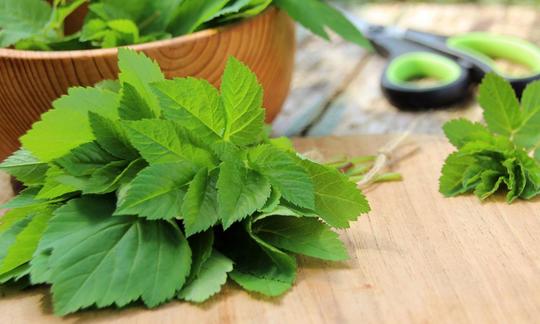

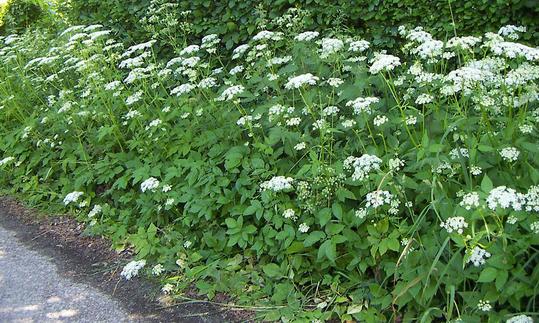

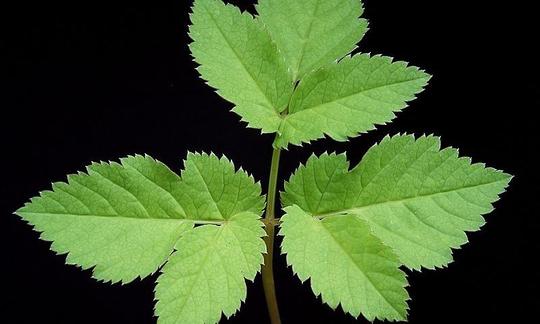

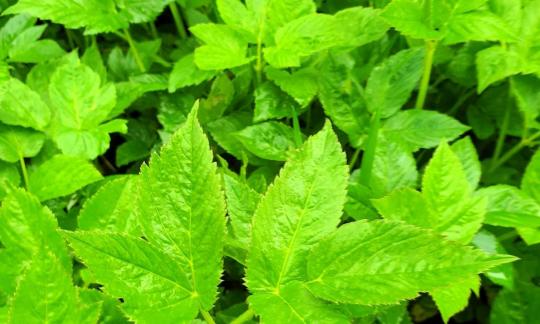

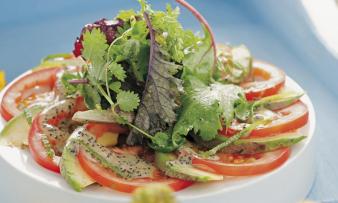
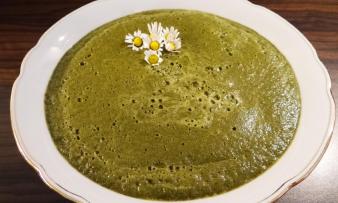





Comments